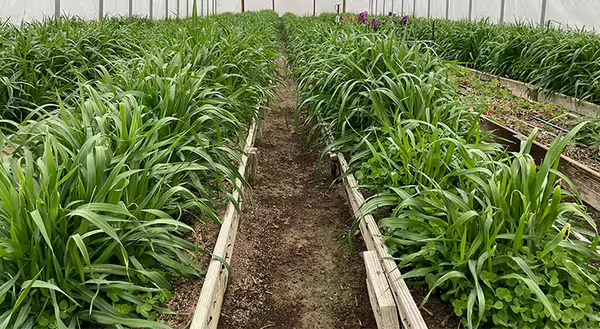
For many growers, January and February is the time to attend meetings and conferences to learn about the latest research information, production and marketing management practices, and to network with other growers. Many have already made seed orders for the coming season but may decide on a last-minute addition or change to try something they heard might be worth trialing on their farm. It was great to catch up with old friends and make new contacts during the From Food to Flowers Everything Local Conference in Springfield. The positive energy and excitement for the upcoming growing season was very noticeable as hundreds of growers and marketers from across the state came together to learn and connect.
It's hard not to talk about the weather and speculate about its effects on the upcoming season. In our area in the far southeastern portion of Illinois, soil conditions were still dry through the second week of January. Some rain hit the area just before the cold air pushed through. Temperatures stayed below freezing for several days, and the coldest actual temperature (not including wind chill) at DSAC was 0 or -1 °F. The last full week of January saw mild temperatures in the mid-40s with 3-5” or more of rain, helping to replenish soil moisture but also creating a sloppy mesh for those with outside chores.
Assuming the spring oat cover crop would winter kill with the impending arctic blast, I took a photo of the cover crops in the treatment high tunnel two days before the temperature drop and then a follow-up photo on January 24. The damage to the spring oats was a bit surprising. Even with the high tunnel being closed up before the temperature drop, I was expecting to see more damage to the spring oats.
The photo of the late seeded cover crops shows damage to the spring oat seedlings as well but considering their small size, it is doubtful that they will survive. Sticky traps for insect monitoring continue to be changed out weekly and sent the Dr. Athey’s lab for indentification and counts. We are now into year two of the HR 133 grant, Strategies for Improving Biological Control of Insect Pests for Vegetable Growers Utilizing High Tunnels.

